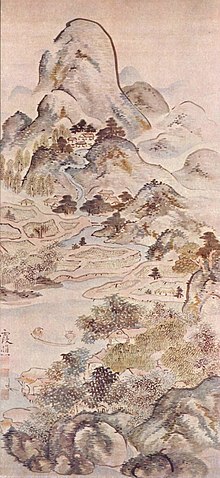

Nanga (南画, "Southern painting"), also known as Bunjinga (文人画, "literati painting"), was a school of Japanese painting which flourished in the late Edo period among artists who considered themselves literati, or intellectuals. While each of these artists was, almost by definition, unique and independent, they all shared an admiration for traditional Chinese culture. Their paintings, usually in monochrome black ink, sometimes with light color, and nearly always depicting Chinese landscapes or similar subjects, were patterned after Chinese literati painting, called wenrenhua (文人画) in Chinese.